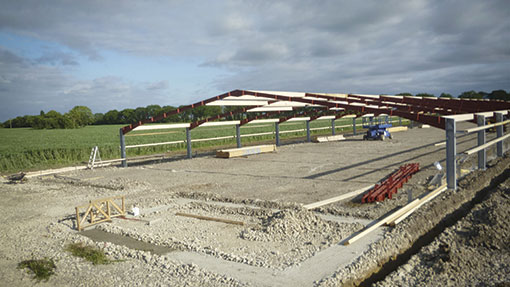Key advice for successful poultry planning

The potential environmental impact of a new poultry farm can derail the planning process. Experts Dr Mark Broomfield and Dr Nigel Gibson explain how to prepare.
Expanding a poultry enterprise usually means either extending sheds or, more often, building new units – either way, increasing the environmental footprint of a farm.
And proving the local environment won’t be adversely affected is intrinsically linked to the process of gaining planning approval and an environmental permit.
Local people are often most concerned about the potential smell of poultry farms, and planning officers and the Environment Agency (EA) will aim to protect their right to a life free from excessive odour. The EA has a further duty: to protect conservation sites from potentially damaging ammonia emissions.
Farmers know how to plan, build and operate poultry farms, and are experts at handling the day-to-day environmental concerns. But most won’t be familiar with demonstrating control of odour impacts on local people, or showing that the impact of ammonia emissions on the environment will be minimal. For this, you’re likely to need specialist input – even if it comes at a cost.
Odour control
The key tool for addressing odour impacts when planning a poultry facility is an odour management plan. This needs to demonstrate minimal impact on local residents.
The EA encourages early discussion of permit requirements and this is the time to agree upon the plan’s scope. It should describe potential odour impacts, with the overall objective of preventing unacceptable odour pollution. Demonstrating this could require the use of atmospheric dispersion models to forecast levels of odour at nearby sensitive properties.
According to EA guidance, an odour management plan should:
- Employ appropriate methods to control and minimise odour pollution
- Prevent unacceptable odour pollution at all times
- Reduce the risk of odour releasing incidents or accidents through good planning and preparation
Ammonia risk
Arguably, ammonia poses the bigger worry for the EA, which has a statutory duty to protect vulnerable sites.
Where a farm is located close to such a designated site, a detailed assessment using specialist computer models may be necessary to forecast how and where ammonia is dispersed from the farm (see diagram). This study will take account of the sensitivity of the habitat site to airborne and deposited ammonia. Typically, a detailed assessment will demonstrate a lower impact, when compared with the EA’s preliminary “screening study”.
This process of evaluating ammonia impacts can be difficult to engage with, not least because it presupposes that a farm may be affecting designated habitat sites in ways that a farm operator was not previously aware of, and for which there is no apparent evidence.
Furthermore, because of the way the screening process works, it can suggest a potentially significant ammonia impact, which subsequently turns out to be less important.
Winning approval
It is worth bearing in mind that EA officers do not have any significant discretion during the impact screening process, but this is not the end of the road and there is likely to be more flexibility at the detailed assessment stage.
At that point, if potential impacts on designated sites remain a key issue, there may well be a discussion to be had with your permitting officer – and you can’t have this discussion if you haven’t done the groundwork.
If a local authority or the EA grants permission for a development without considering these impacts, or overlooks a significant impact on a protected site, the decision would be open to challenge. Such challenge would be time consuming and expensive at best, and might ultimately be a showstopper.
Conversely, if planning permission were refused on the grounds of impacts on natural habitats, despite correctly addressing these impacts, then the applicant would have robust grounds for overturning the decision on appeal.
Our recommendation is to hold scoping discussions with the EA, to go through the agency’s staged screening process for assessing habitat impacts, and to develop an odour management plan.
In most cases, that will deal with these technically challenging issues. And if it doesn’t, it leaves you in a strong position to negotiate having carried out your application to a high standard.
Dr Mark Broomfield and Dr Nigel Gibson are environmental experts with consultancy firm Ricardo-AEA.
